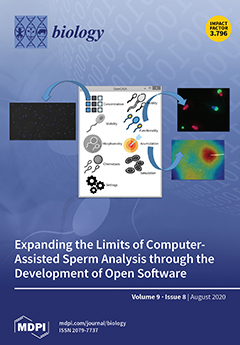Plant facilitation has a pivotal role in regulating species coexistence, particularly under arid environments. The present study aimed to evaluate the facilitative effect of
Calligonum polygonoides L. on its understory plants in coastal habitat. Forty
Calligonum shrubs were investigated and the environmental data
[...] Read more.
Plant facilitation has a pivotal role in regulating species coexistence, particularly under arid environments. The present study aimed to evaluate the facilitative effect of
Calligonum polygonoides L. on its understory plants in coastal habitat. Forty
Calligonum shrubs were investigated and the environmental data (soil temperature, moisture, pH, salinity, carbon and nitrogen content, and light intensity), vegetation composition, and diversity of associated species were recorded under- and outside canopies. Eight of the most frequent understory species were selected for evaluating their response to the facilitative effect of
C. polygonoides. Bioactive ingredients of
Calligonum roots were analyzed using gas chromatography-mass spectrometry (GC-MS), and mycorrhizal biodiversity in their rhizosphere soil was also assessed. The effect of
Calligonum on understory plants ranged between facilitation and inhibition in an age-dependent manner. Old shrubs facilitated 18 and inhibited 18 associated species, while young shrubs facilitated 13 and inhibited 9 species.
Calligonum ameliorated solar radiation and high-temperature stresses for the under canopy plants. Moreover, soil moisture was increased by 509.52% and 85.71%, while salinity was reduced by 47.62% and 23.81% under old and young shrubs, respectively. Soil contents of C and N were increased under canopy. This change in the microenvironment led to photosynthetic pigments induction in the majority of understory species. However, anthocyanin, proline contents, and antioxidant enzyme activities were reduced in plants under canopy. Thirteen mycorrhizal fungal species were identified in the rhizospheric soil of
Calligonum with the predominance of
Funneliformis mosseae. Thirty-one compounds were identified in
Calligonum root extract in which pyrogallol and palmitic acid, which have antimicrobial and allelopathic activities, were the major components. The obtained results demonstrated that facilitation provided by
Calligonum is mediated with multiple mechanisms and included a set of interrelated scenarios that took place in a species-specific manner.
Full article






